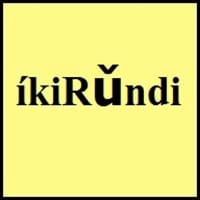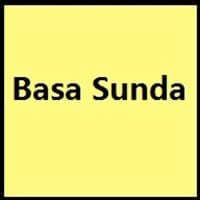Kirundi and Sundanese
Countries
Burma
West Java
National Language
Burundi, Gambia
Indonesia
Second Language
Not spoken in any of the countries
Not spoken in any of the countries
Speaking Continents
Africa, Asia
Asia
Minority Language
Not spoken in any of the countries
Not spoken in any of the countries
Regulated By
Not Available
Not Available
Interesting Facts
- Kirundi language is tonal, since it has high and low essential tones.
- Kirundi Language is referred as a language where Meeussen's rule is active, this rule describes a certain pattern of tonal change in Bantu languages.
- The Sundanese language is second most widely spoken regional language in Indonesia.
Similar To
Kinyarwanda Language
Madurese and Malay Languages
Derived From
Not Available
Not Available
Alphabets in
Kirundi-Alphabets.jpg#200
Sundanese-Alphabets.jpg#200
Scripts
Latin
Latin, Sundanese
Writing Direction
Not Available
Left-To-Right, Horizontal
How Are You?
Urakomeye?
Kumaha kabarna?
Good Night
Ijoro ryiza
Wilujeng kulem
Good Evening
Mwiriwe
Wilujeng wengi
Good Afternoon
Mwiriwe
Wilujeng siang
Good Morning
Mwaramutse
Wilujeng énjing
Sorry
Not available
Hapunten
Bye
N’agasaga
Wilujeng angkat
I Love You
Not available
Abdi bogoh ka anjeun
Excuse Me
Not available
Punten
Dialect 1
Rwanda-Rundi
Western dialect
Where They Speak
Burundi, Rwanda, Tanzania, Uganda
Banten
How Many People Speak
Not Available
Dialect 2
Ha
Northern dialect
Where They Speak
Tanzania
Bogor
How Many People Speak
Not Available
Dialect 3
Shubi
Priangan dialect
Where They Speak
Tanzania
Bandung
How Many People Speak
Not Available
Native Name
íkiRǔndi
Not Available
Alternative Names
Not Available
Priangan, Sunda
French Name
rundi
soundanais
German Name
Kirundi
Sundanesisch
Pronunciation
Not Available
Not Available
Ethnicity
Hutu, Tutsi, and Twa
Sundanese, Bantenese, Cirebonese, Badui
Origin
1500
5th century AD
Language Family
Niger-Congo Family
Austronesian Family
Subgroup
Not Available
Indonesian
Branch
Not Available
Not Available
Early Forms
No early forms
No early forms
Standard Forms
Kirundi
Sundanese
Language Position
Not Available
Signed Forms
Not Available
Not Available
Scope
Not Available
Individual
ISO 639 6
Not Available
Not Available
Glottocode
rund1242
sund1251
Linguasphere
No data available
No data available
Language Type
Not Available
Living
Language Linguistic Typology
Not Available
Subject-Verb-Object
Language Morphological Typology
Not Available
Not Available
All Kirundi and Sundanese Dialects
Most languages have dialects where each dialect differ from other dialect with respect to grammar and vocabulary. Here you will get to know all Kirundi and Sundanese dialects. Various dialects of Kirundi and Sundanese language differ in their pronunciations and words. Dialects of Kirundi are spoken in different Kirundi Speaking Countries whereas Sundanese Dialects are spoken in different Sundanese speaking countries. Also the number of people speaking Kirundi vs Sundanese Dialects varies from few thousands to many millions. Some of the Kirundi dialects include: Rwanda-Rundi, Ha. Sundanese dialects include: Western dialect , Northern dialect. Also learn about dialects in South American Languages and North American Languages.
Kirundi and Sundanese Speaking population
Kirundi and Sundanese speaking population is one of the factors based on which Kirundi and Sundanese languages can be compared. The total count of Kirundi and Sundanese Speaking population in percentage is also given. The percentage of people speaking Kirundi language is 0.13 % whereas the percentage of people speaking Sundanese language is 0.57 %. When we compare the speaking population of any two languages we get to know which of two languages is more popular. Find more details about how many people speak Kirundi and Sundanese on Kirundi vs Sundanese where you will get native speakers, speaking population in percentage and native names.
Kirundi and Sundanese Language Codes
Kirundi and Sundanese language codes are used in those applications where using language names are tedious. Kirundi and Sundanese Language Codes include all the international language codes, glottocodes and linguasphere.





